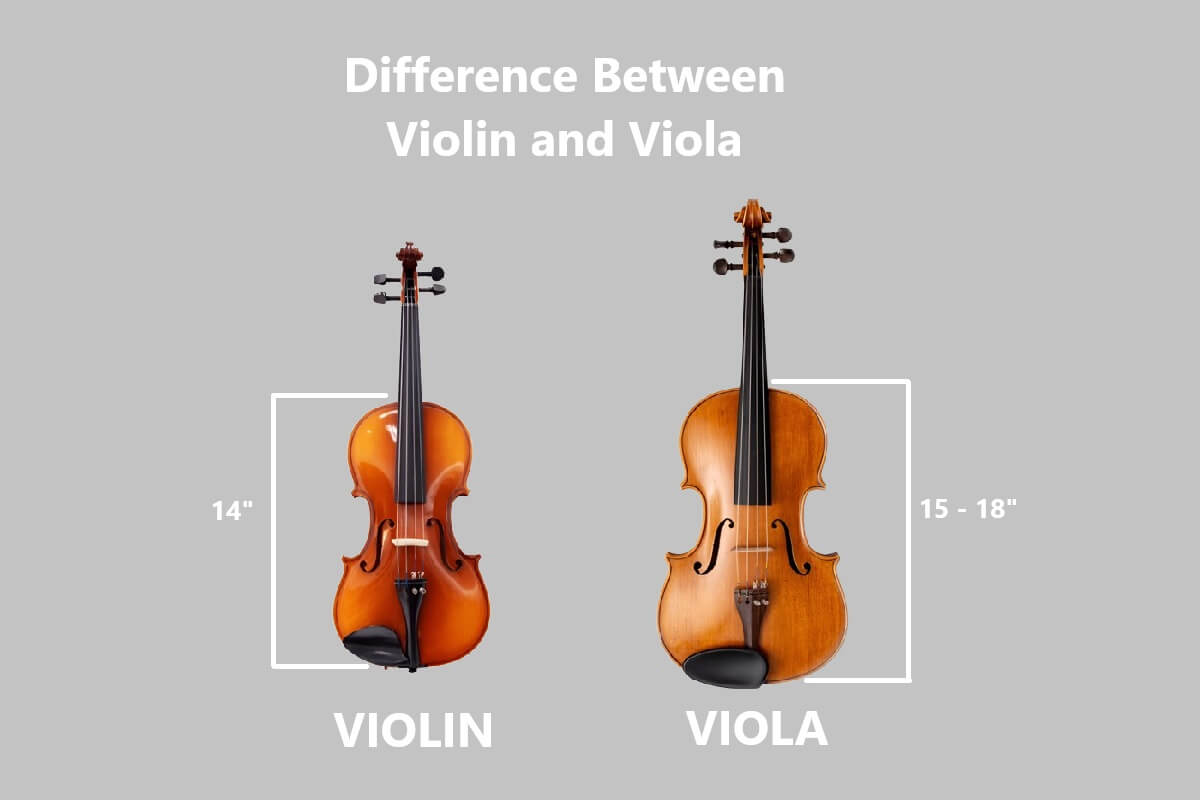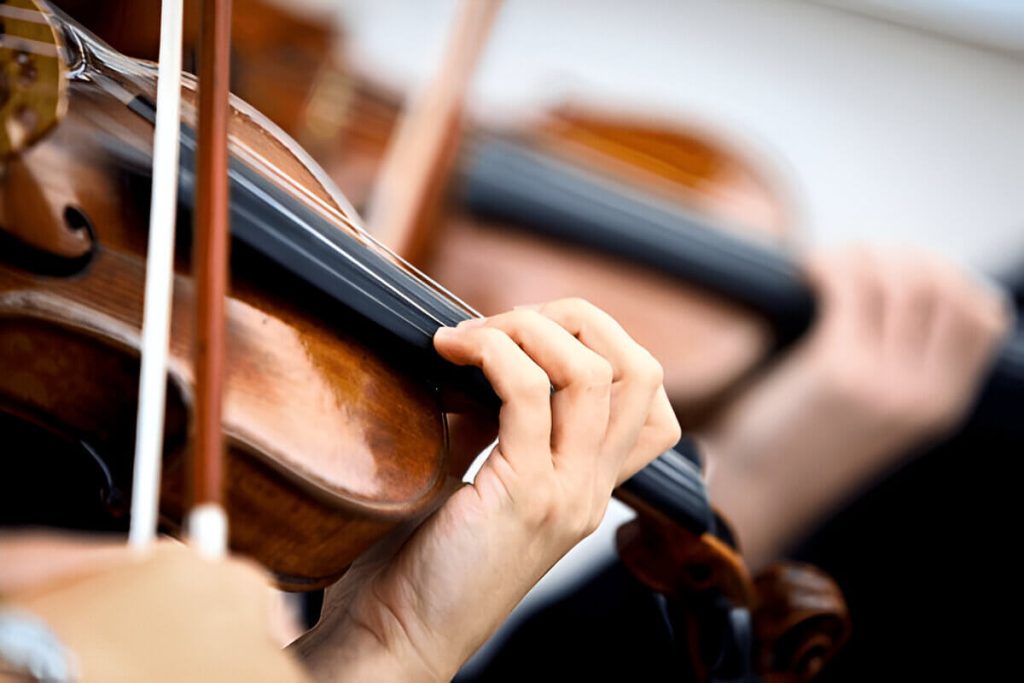
The violin and viola are prominent orchestral string instruments with distinct size, sound, and ensemble roles. This guide details their physical differences, tuning, sound contributions, playing techniques, cultural significance, and repertoire. Whether you’re a musician or curious listener, this exploration enhances your understanding of these captivating instruments.
The Physical Differences (Size, Shape, and Strings)
When it comes to distinguishing between the violin and the viola, there are several physical differences that set these two string instruments apart. One of the most noticeable differences is size. Generally, violas are larger than violins, with a typical viola measuring between 15 to 18 inches in body length compared to a violin’s 14 inches. This difference in size affects not only how each instrument is played but also their tonal qualities.
In terms of shape, both instruments have similar contours; however, the viola’s slightly larger body contributes to its deeper and richer sound. This subtle variation in shape can influence the resonance and projection of each instrument, making them suitable for different musical roles within an orchestra or ensemble.
The strings further differentiate these two instruments. A standard violin is strung with four strings tuned to G-D-A-E from lowest to highest pitch. In contrast, a viola’s strings are tuned C-G-D-A, which means it shares three strings with the violin but replaces the high E string with a lower C string. This change in tuning gives the viola its distinctive alto voice within orchestral music and chamber ensembles.
Tuning and Sound (How Their Music Differs)

When it comes to string instruments, the nuances of tuning and sound play a significant role in defining their unique musical identities. The violin and viola, while similar in appearance, have distinct differences that contribute to their individual sounds.
Violin tuning is characterized by its higher pitch range. Traditionally tuned to G-D-A-E from lowest to highest string, the violin’s tuning allows it to produce bright and vibrant tones. These characteristics make the violin particularly suited for carrying melodies and delivering expressive solos in orchestral settings.
On the other hand, viola tuning follows a different pattern: C-G-D-A. This lower pitch range grants the viola a richer and more resonant sound compared to its smaller counterpart. The deeper timbre of the viola adds depth and warmth to ensemble pieces, often providing harmonic support rather than taking on lead roles.
The sound characteristics of each instrument are also influenced by their physical construction. The violin’s smaller body size contributes to its ability to project clear, piercing notes that can cut through an orchestra with ease. Conversely, the larger body of the viola produces a fuller and more mellow tone that blends seamlessly with other instruments.
Understanding these differences in tuning and sound characteristics helps musicians choose which instrument best suits their style or complements an ensemble’s needs. Whether it’s the soaring melodies of a violin or the rich harmonies of a viola, each brings its own voice to music’s grand tapestry.
The Role in an Orchestra (Violin Versus Viola Parts)
In the symphony orchestra, the violin and viola each play distinct yet complementary roles that contribute to the ensemble’s rich tapestry of sound. Understanding these orchestral roles is key to appreciating how each instrument enhances a performance.
The violins, often divided into first and second sections, typically carry the melody in orchestral compositions. The first violins are usually positioned at the forefront of musical themes, driving forward the harmonic narrative with their bright and piercing tones. Second violins, while sometimes sharing melodic duties, often provide harmonic support and rhythmic stability alongside their first violin counterparts. This duality allows for intricate interplay within the string section itself.
On the other hand, violas occupy a unique niche within the orchestra’s structure. Slightly larger than violins and tuned a fifth lower, they produce a warmer and deeper sound. The viola’s role is primarily supportive; it bridges gaps between high-pitched instruments like violins and cellos or basses in lower registers. This middle voice adds depth to harmonies and enriches textures within symphonic works.
Both violinists and violists must be adept at blending with other sections while also capable of stepping into soloistic moments when required by composers. Their roles demand not only technical proficiency but also an understanding of how their parts fit into larger musical contexts.
Whether providing soaring melodies or lush harmonies, both instruments are indispensable to achieving balance in an orchestra’s soundscape. Each brings its unique voice to create dynamic performances that captivate audiences worldwide.
Playing Techniques (Bowing and Fingering Variations)
When diving into the world of string instruments, understanding the nuances between violin and viola playing techniques is essential for any aspiring musician. Both instruments, while similar in appearance, require distinct approaches in terms of bowing styles and fingering techniques.
Starting with bowing styles, both violins and violas share fundamental techniques such as legato, staccato, and spiccato. However, due to the viola’s larger size and thicker strings, players often need to apply more pressure and use a slower bow speed to produce a rich sound. This contrasts with the violin’s lighter touch and faster bow movements that cater to its higher pitch range. Mastery of these subtle differences can significantly enhance a musician’s ability to expressively perform on either instrument.
Fingering techniques also vary between violins and violas due to their size difference. Violinists typically employ narrower finger spacing because of the instrument’s smaller scale length. In contrast, violists must adapt to wider finger placements which can affect agility across different positions on the fingerboard. Additionally, transitioning from one instrument to another requires adjusting hand posture and pressure applied by fingers on strings.
Understanding these variations in playing technique not only enriches one’s musical repertoire but also deepens appreciation for each instrument’s unique voice within an ensemble or solo performance setting. Whether you are focusing on violin or viola playing technique (or both) exploring these aspects will undoubtedly contribute to your growth as a versatile string player.
Cultural Significance and Repertoire of Each Instrument
String instruments have played a pivotal role in shaping musical traditions across the globe, with the violin and viola at the forefront of this cultural tapestry. Understanding their repertoires and cultural significance offers insight into their enduring appeal and versatility.
The violin, renowned for its expressive range and agility, boasts an extensive repertoire that spans classical symphonies to contemporary compositions. Its prominence in orchestras and chamber music ensembles underlines its versatility. The violin’s ability to convey emotion has made it a favorite among composers, resulting in iconic works from Bach’s solo sonatas to Tchaikovsky’s concertos. Beyond Western classical music, the violin has also found a place in diverse genres such as Indian classical music and jazz, showcasing its global impact.
In contrast, the viola often plays a more nuanced role within ensembles but is no less significant culturally. Its deeper, mellower tones provide rich harmonies that complement the brighter sound of violins. The viola repertoire includes masterpieces from composers like Brahms and Bartók who appreciated its unique timbre. While historically overshadowed by the violin, recent decades have seen a resurgence in interest for solo viola works as musicians explore its distinct voice.
Both instruments contribute significantly to cultural heritage through their roles in traditional folk music worldwide (from Irish fiddling to Eastern European folk tunes) demonstrating their adaptability across cultures.
In conclusion, while there are differences between the violin music repertoire vs viola music repertoire, both string instruments hold immense cultural value. Their ability to transcend genres and geographies underscores their integral place in human expression through music.
